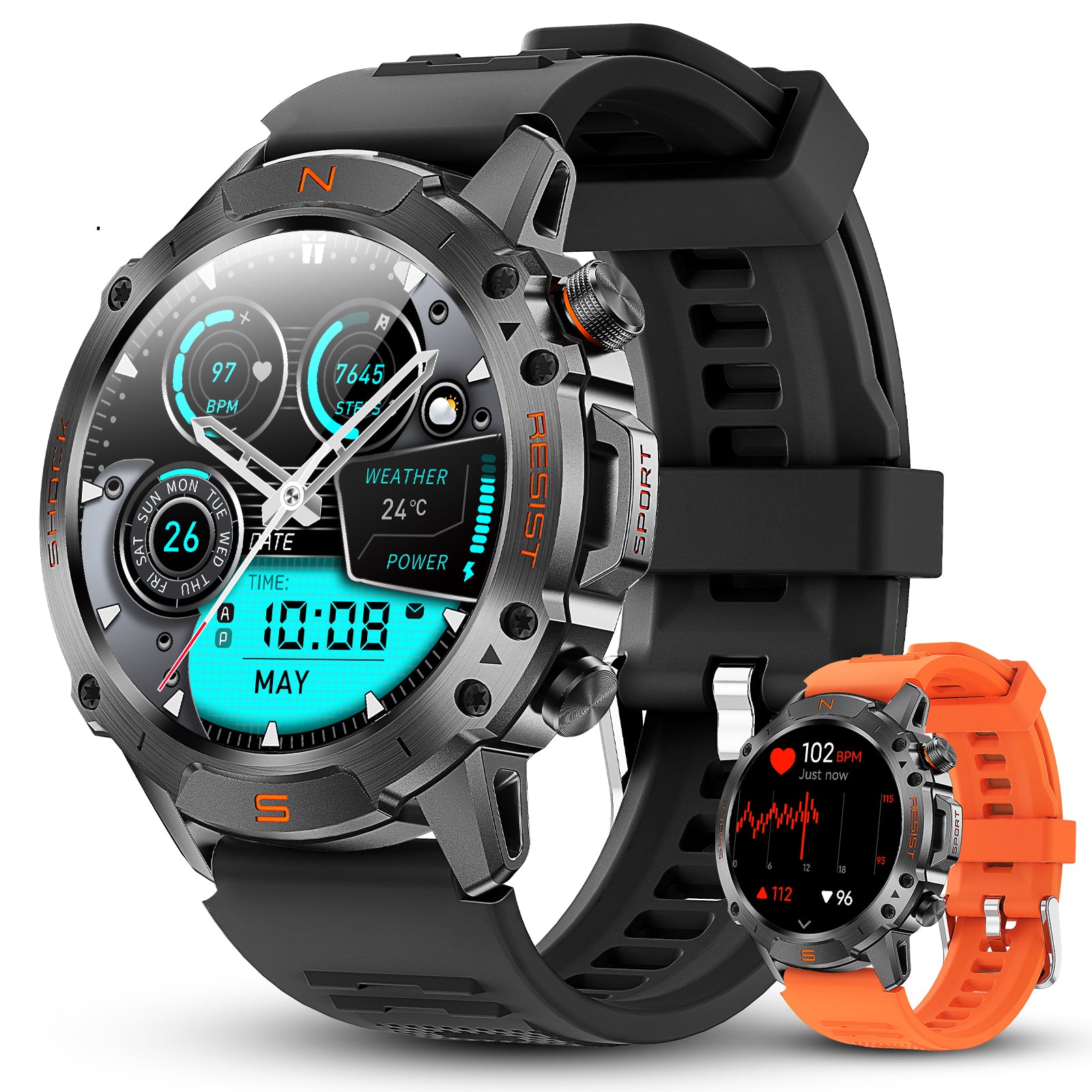One of the most common questions fitness enthusiasts and beginners alike ask is, “How many days a week should I work out?” The answer is nuanced—it depends on your individual fitness goals, current level, and how well your body recovers. Training smarter, not just harder, is the key to consistent progress, injury prevention, and long-term health. That’s where the WalkerFit M6 Ultra Smartwatch comes in—offering advanced metrics and recovery insights so you can customize your workout schedule based on real data, not guesswork.
Understanding Workout Frequency: Why It Matters
Workout frequency is a critical component of any fitness program. Exercising too little may slow progress, while overtraining can lead to fatigue, injury, and burnout. Research suggests that optimal workout frequency varies by training goals:
· General health & fitness: 3-5 days per week with a mix of moderate cardio and strength training.
· Muscle gain and strength: 4-6 days with structured resistance training and adequate recovery.
· Endurance athletes: 5-7 days including long sessions and interval training, balanced with active recovery.
It’s essential to balance training load (how hard you push) with recovery (how well your body repairs and adapts). The WalkerFit M6 Ultra’s data-driven insights help you maintain this balance.
How the WalkerFit M6 Ultra Supports Smarter Training
Unlike generic fitness trackers, the M6 Ultra offers a comprehensive approach to training by monitoring your body’s physiological responses in real time. Here’s how it helps you optimize workout frequency:
1. Advanced Heart Rate Monitoring
The M6 Ultra continuously measures your heart rate and tracks how much time you spend in different heart rate zones (resting, fat burn, cardio, peak). Training within the correct zones helps maximize results without overexertion.
2. Training Load and Recovery Metrics
Using proprietary algorithms, the watch calculates your training load—a measure of cumulative stress from workouts—and pairs it with sleep quality data to estimate your recovery status. This lets you know if your body is ready for a high-intensity session or needs rest.
3. Sleep Tracking for Recovery
Sleep is when your muscles repair and your nervous system resets. The M6 Ultra analyzes sleep stages (deep, light, REM) to provide actionable insights on how well you’re recovering overnight, influencing how many days per week you should push hard or pull back.
4. Multiple Workout Modes
The M6 Ultra supports a variety of exercise types—running, cycling, strength training, HIIT, yoga—allowing you to diversify your workouts and target different muscle groups for balanced fitness.
![]()
Recommended Weekly Workout Plans Using WalkerFit M6 Ultra Data
Here’s a data-backed framework that aligns with different fitness levels, emphasizing recovery and progress:
|
Fitness Level |
Workout Days per Week |
Workout Type |
Recovery Strategy |
|
Beginner |
2-3 days |
Low-impact cardio + basic strength |
Full rest days + light activity (walking, stretching) |
|
Intermediate |
4-5 days |
Mixed cardio, strength, and flexibility |
Active recovery days + monitoring fatigue |
|
Advanced |
6+ days |
Split routine targeting muscle groups + endurance training |
Alternating high intensity with active recovery days |
The WalkerFit M6 Ultra helps track training load trends, so you can dynamically adjust your weekly plan instead of following rigid schedules.
Why Consistency Beats Intensity
Consistency is the cornerstone of fitness. It’s better to work out moderately several times a week than push yourself to extremes sporadically. The M6 Ultra’s daily readiness score—which factors in sleep, heart rate variability, and prior workout load—guides you in balancing workouts and rest.
Common Mistakes About Workout Frequency
· Ignoring recovery: Skipping rest days leads to injury and burnout.
· Doing the same workouts: Overuse injuries happen when the same muscles are overworked.
· Not tracking progress: Without objective feedback, it’s hard to know if you’re improving or overtraining.
The WalkerFit M6 Ultra addresses all these by combining data-driven insights with personalized workout guidance.
Frequently Asked Questions (FAQ)
Q1: Is it safe to work out 7 days a week with the M6 Ultra?
A: It can be, but only if you include active recovery days with lower intensity. The watch helps identify when to push and when to recover based on your physiological data.
Q2: How accurate is the sleep tracking on the M6 Ultra?
A: The M6 Ultra uses advanced sensors to track sleep stages accurately, providing insights to optimize recovery strategies.
Q3: What makes WalkerFit M6 Ultra different from other fitness trackers?
A: Its focus on training load, recovery, and personalized coaching sets it apart—helping you not just track activity, but train smarter.
Final Thoughts: Train Smarter, Not Harder with WalkerFit M6 Ultra
The question “How many days a week should I work out?” has no universal answer, but with the right data and tools, you can find what works best for your body and goals. The WalkerFit M6 Ultra Smartwatch offers an advanced, science-backed way to monitor training load, recovery, and sleep—empowering you to optimize workout frequency and improve results sustainably.
Explore the Walkerfit M6 Ultra









Leave a comment
All comments are moderated before being published.
This site is protected by hCaptcha and the hCaptcha Privacy Policy and Terms of Service apply.